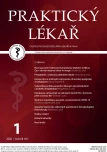Comparison of cohousing in selected EU countries in the context of care for seniors 65+
Authors:
L. Motlová 1; M. Trešlová 2; V. Stasková 2; M. Zeman 3
Authors‘ workplace:
Jihočeská univerzita v Českých Budějovicích, Zdravotně sociální fakulta, Děkanka: Mgr. Ivana Chloubová, Ph. D.
; Ústav sociálních a speciálně-pedagogických věd, Ředitelka: doc. PhDr. Adéla Mojžíšová, Ph. D.
1; Ústav ošetřovatelství, porodní asistence a neodkladné péče, Ředitelka: prof. PhDr. Valérie Tóthová, Ph. D.
2; Ústav fyzioterapie a vybraných medicínských oborů, Ředitelka: MUDr. Mgr. Marcela Míková, Ph. D.
3
Published in:
Prakt. Lék. 2021; 101(1): 21-26
Category:
Of different specialties
Overview
Aim: The aim of the qualitative research was to describe cohousing in selected EU countries, i.e. Denmark, Austria and Germany, on the basis of established criteria, focusing on the philosophy and functioning of cohousing as a shared way of living.
Methods: Qualitative research was conducted from February to April 2019 in 2 couhousines in Denmark, 2 cohousines in Austria and 1 cohousing in Germany. The method of questioning and the technique of semi-structured interview, which was conducted with 5 inhabitants or workers of the given cohousing, were chosen.
Results: The common goals and visions of cohousing in these facilities are the same. The population in a given cohousing depends on its type and location and is about 80 to 200 people. Residential and non-residential premises within cohousing are also very different. The management of the cohousing community is usually based on the interaction of the population. Funding for the establishment and operation of a cohousing community is usually planned as a private facility owned by its residents. Social interactions arise from the nature of cohousing, but they are very individual. Problems in coexistence in the cohousing community are not too great. People do not perceive the shortcomings, but rather emphasize its contribution. Difficulties included problems related to the limit of one’s own privacy and boundaries or the maintenance of order.
Conclusion: In the Czech Republic, cohousing is less well known and is not a matter of course as a way of life and shared living. The findings of our qualitative research have contributed to the description of this shared living and its philosophy. The benefits of senior cohousing are not only active living in the community, mutual support and help, gaining a sense of security and safety, but also maintaining and promoting social contacts with other people. From our perspective, senior cohousing can also be seen as one of the ways to prevent social exclusion in old age.
Keywords:
cohousing – senior cohousing – seniors – Denmark – Germany – Austria – senior care
Sources
1. Cohousing CZ. Co je cohousing [online]. 2011. Dostupný na: https://www.cohousing.cz/co-je-cohousing/ [cit. 2020-03-20].
2. Cohousing CZ. Jak vypadá? [online] 2011. Dostupný na: https://www.cohousing.cz/jak-vypada [cit. 2020-03-20].
3. Cohousing CZ. Senior cohousing, cohousing 50+/55+, stárnutí v komunitě [online] 2011. Dostupný na: https://www.cohousing.cz/senior-cohousing2 [cit. 2020-03-20].
4. Critchlow M, Moore A. When do we begin to flourish in senior cohousing? Communities. Winter 2012; (157): 60–61.
5. Durrett C. The senior cohousing handbook: a community approach to independent living. 2nd Ed. Gabriola Island: New Society Publishers 2009.
6. Dvořáčková D, Mojžíšová A. Modern trends in the care of seniors in the residential facilities of the social services. Kontakt 2019; 21(1): 93–97.
7. Killock J. Is cohousing a suitable housing typology for an ageing population within the UK? 2014 [online]. Dostupné na: http://kollektivhus.nu/pdf/BoydAugerScholarship2011FinalReport.pdf [cit. 2020-03-20].
8. Kelleris A. The great experiment: everyday life in senior cohousing in Denmark. Communities 2014; (163): 73.
9. Lang R, Stoeger H. The role of the local institutional context in understanding collaborative housing models: empirical evidence from Austria. IJHP 2018; 18(1): 35–54.
10. Sandstedt E, Westin S. Beyond Gemeinschaft and Gesellschaft. Cohousing Life in Contemporary Sweden. Housing. Theory and Society 2015; 32(2): 131–150.
Labels
General practitioner for children and adolescents General practitioner for adultsArticle was published in
General Practitioner

2021 Issue 1
Most read in this issue
- Time in range – a new parameter for diabetes mellitus metabolic control
- V. Joint statement of professional societies on pharmacological treatment of obesity Obesity has become a worldwide
- Prediabetes in general practitioner’s clinical practice
- Possibilities in rehabilitation of COVID-19 patients
